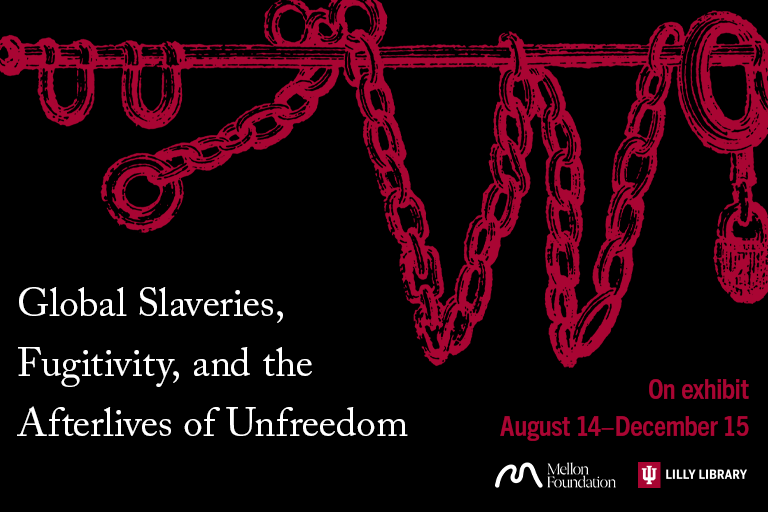
The Lilly Library collection includes unique items from across the world that attest to histories of slavery and unfreedom in the Atlantic, Indian Ocean, Mediterranean, and Pacific worlds. This exhibition highlights several of these items and showcases the importance of studying the global interconnectedness of histories of slavery across the globe. It also draws attention to the various forms of fugitivity that challenged systems of slavery by acts of withdrawal and contestation. It aims to broaden and deepen our understanding of how histories of slavery and unfreedom continue to shape today’s inequities. The materials include items from different geographies, including textual passages in various languages and visual material from a range of places and times. The themes of the exhibition offer visitors a chance to reflect and learn more about processes of enslavement and forms of violence, the formation of runaway and maroon communities, histories of emancipation and abolition, and the ways in which these histories continue to affect and shape our world today.
The exhibition is part of the Sawyer Seminar “Global Slaveries, Fugitivity, and the Afterlives of Unfreedom,” which brings together scholars, literary authors, visual artists, and museum and library practitioners to reflect on histories of slavery and their afterlives. These explorations will take place through a series of workshops and conferences, and a further exhibition, over the Fall 2023 and Spring 2024 semesters.
The curators and co-organizers for the exhibition and Sawyer seminar, Prof. Pedro Machado and Prof. Olimpia E. Rosenthal, acknowledge the traditional lands of the Miami, Delaware, Potawatomi and Shawnee people on which Indiana University, Bloomington, was built. We are grateful to the Lilly Library and staff who made this exhibition possible, and thank the graduate research assistants who helped with the selection of material and research for the labels, and especially the Mellon Foundation for funding this timely project.

